
Here’s A Better Look At The Rear End Of The Next-Gen Scorpio Ahead...
- Sep 21, 2021
- Views : 9463


The Indian car market has experienced a massive increase in the number of EVs in the last few years, with popular cars like the Tata Nexon EV and Tata Punch EV being the top-selling electric vehicles. Well, this is just the beginning and there are many new electric vehicles that will be launched very soon. In this article, we take you through the ICE-powered cars that will be soon be available in EV version:
A nameplate that is very popular in India, the Creta, will soon be electrified. It has been announced that the EV version of the Creta will be launched by March 2025, and its production will start by the end of 2024. The Creta EV will be the first mass market EV by Hyundai and will also be Hyundai’s first EV for the masses on our shores.
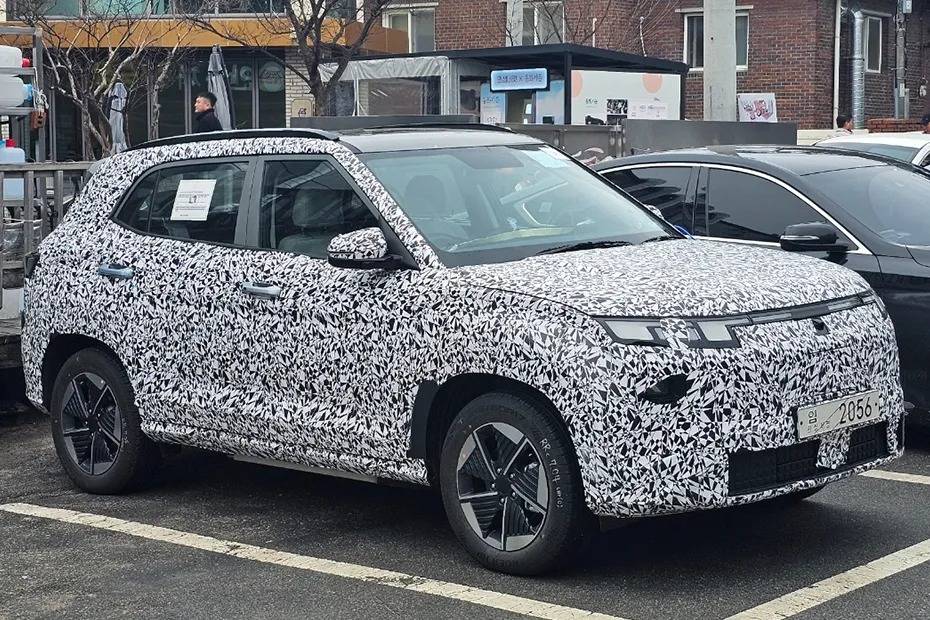
The Creta EV is expected to get slightly different styling compared to the standard Creta with EV-specific design cues. Based on recent spy shots, those cues include aero-specific alloys, a tweaked grille and likely, tweaked bumpers.
The interior will resemble that of the standard Creta, but our spy shots have given us a sneak peak showing minor changes, including a new three-spoke steering wheel and a steering column mounted gear lever. The features list will include dual-integrated 10.25-inch screens, Android Auto and Apple CarPlay, dual-zone climate control, panoramic sunroof, a Bose sound system, ventilated front seats, a powered driver’s seat and keyless entry with push button start.
Safety will be taken care of by six airbags, ABS with EBD, front and rear parking sensors, a 360-degree camera, electronic stability control and level-2 ADAS features.
Technical specifications are yet to be disclosed, but we can expect it to get multiple motors and battery pack options with an expected range of more than 400 kms. And like every EV out there, it will carry a premium over its ICE counterpart, which retails between Rs 10.99 lakh to Rs 20.14 lakh (ex-showroom).
Mahindra will be launching the EV version of the XUV700, which will be called the XUV.e8.We recently found the patent filings that revealed the interior of the SUV, which will feature a revised dashboard layout with a triple-screen setup. It will be based on Mahindra’s INGLO platform and will retain the XUV700’s silhouette.
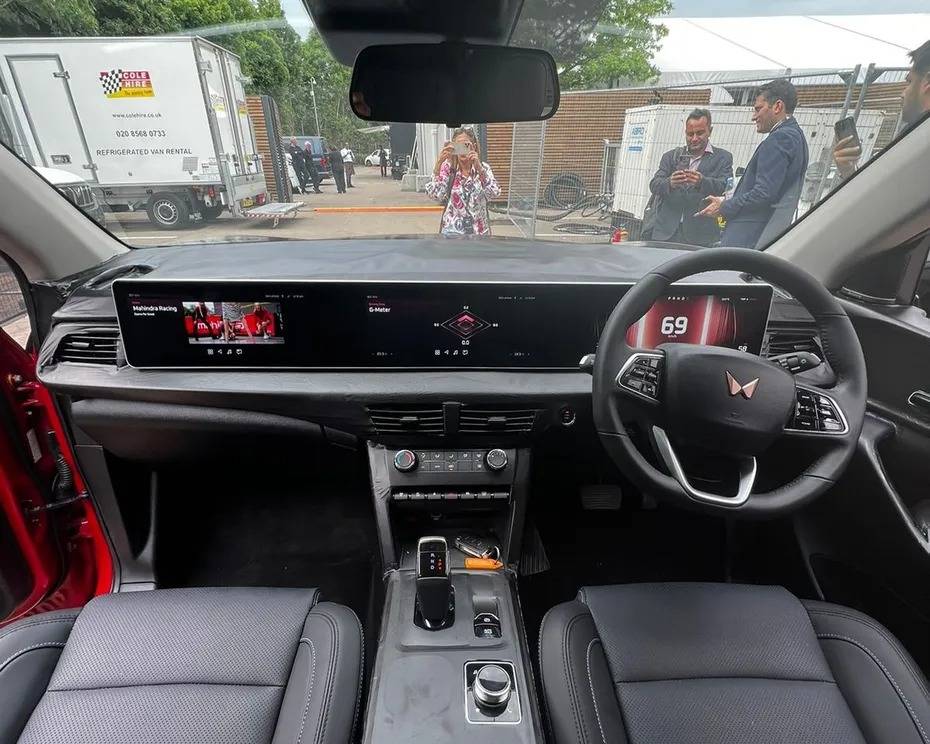
Despite the same silhouette, it will get an updated styling for the exterior, featuring a revamped fascia that will come with connected LED signature lights and redesigned housing for the headlights.
Apart from the triple-screen setup inside its cabin, the XUV.e8 will get a two-spoke flat-bottom steering wheel which gets an illuminated logo in the centre, similar to the one we have seen on Tata cars like the Nexon and Harrier. The expected features list includes a 10.25-inch digital driver’s display, 10.25-inch touchscreen infotainment system supporting wireless Android Auto and Apple CarPlay, ventilated front seats, memory ORVMs, dual-zone climate control, a panoramic sunroof, cruise control, keyless entry with push-button start, and ambient lighting. It will get safety features including level-2 ADAS, ABS with EBD, electronic stability control, and a 360-degree camera.
Details of the powertrain options have not been revealed yet, but the INGLO platform is expected to accommodate batteries with capacities of 60 and 80 kWh. We also expect it to get a dual-motor setup, sending power to all four wheels. It is expected to launch in late 2024 and could be priced from around Rs 30 lakh (ex-showroom).
After electrifying the Nexon, Punch, Tigor and Tiago, the Harrier will be yet another Tata available in an EV version. We have recently spotted the Harrier EV being tested in high altitude terrain ahead of its expected launch by March 2025
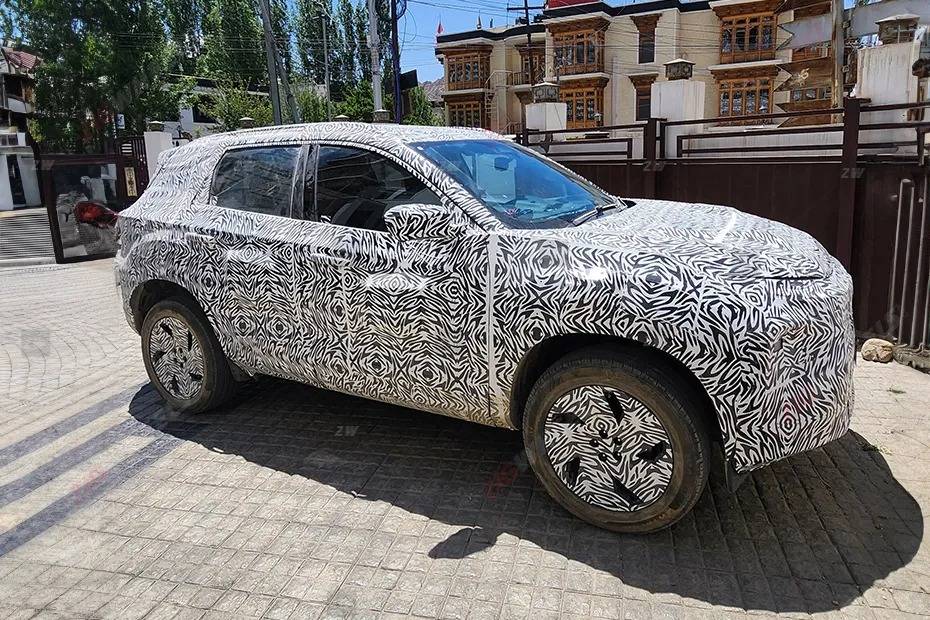
the automobile community
The Harrier EV gets the same silhouette as the standard Harrier, but expect new aero-specific 5-spoke alloys. We suspect it will get a tweaked front grille and bumpers to stand apart from the ICE model.
The cabin, however, is expected to be the same as the standard Harrier, save for a different colour scheme. Features expected are: a 12.3-inch touchscreen infotainment system, wireless Apple CarPlay and Android Auto, a 10.25-inch digital driver’s display, dual-zone climate control, a panoramic sunroof, multi-colour ambient lighting, ventilated and powered front seats.
Safety features will likely include up to seven airbags, ABS with EBD, front and rear parking sensors, a 360-degree camera, electronic stability control and level-2 ADAS.
Tata has confirmed that the Harrier EV will be available in a dual-motor layout with all-wheel drive. The recent spy shots also revealed the dual-motors setup for the first time ever. A single motor two-wheel drive powertrain will also be available with the Harrier EV. Another key change here is that the upcoming Harrier EV will get a new multi-link suspension, which will replace the torsion beam setup of the standard car. With the new setup, we can also expect superior ride and handling manners.
We also expect Tata to launch the Safari EV, soon after launching the Harrier EV. The Safari EV will likely get the same features and powertrain options like its smaller sibling. and will offer a 7-seater alternative to it. The Harrier EV is bound to carry a premium over the standard car, and is likely to have a starting price of around Rs 30 lakh (ex-showroom).
We have another Korean SUV on the list, and this time it’s the Carens EV, which is also expected to be launched soon. It will be launched after the arrival of the recently-spied ICE-powered Carens facelift, and could be the most affordable electric 7-seater offering in India. We expect it to be priced at a premium over the standard Carens.
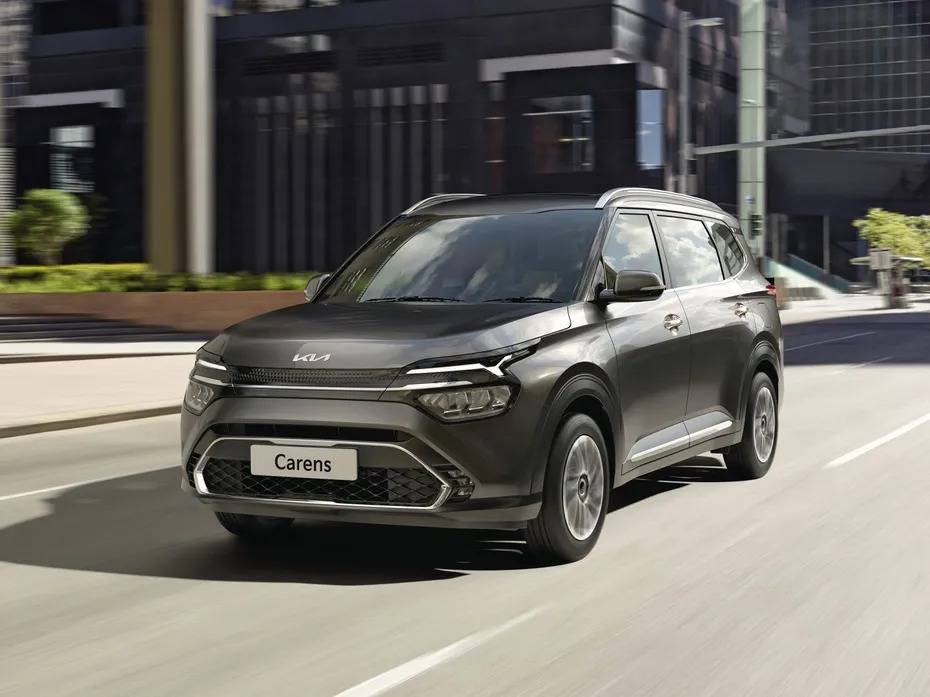
The Carens EV is expected to come with features like a 10.25-inch infotainment system, automatic climate control, an air purifier, ambient lighting, cruise control, a panoramic sunroof, wireless charging, and ventilated front seats. Safety features are likely to include 6 airbags, ABS with EBD, electronic stability control, front and rear parking sensors and a host of ADAS features.
Currently, there is no information about the technical specifications, but we expect it to come with multiple battery pack options, which could offer a range of over 400 kms.
Honda had launched the Elevate in 2023, and during the launch, the Japanese carmaker had announced that they will bring an electric version of the Elevate by 2026. The Elevate EV will compete directly with the Creta EV.
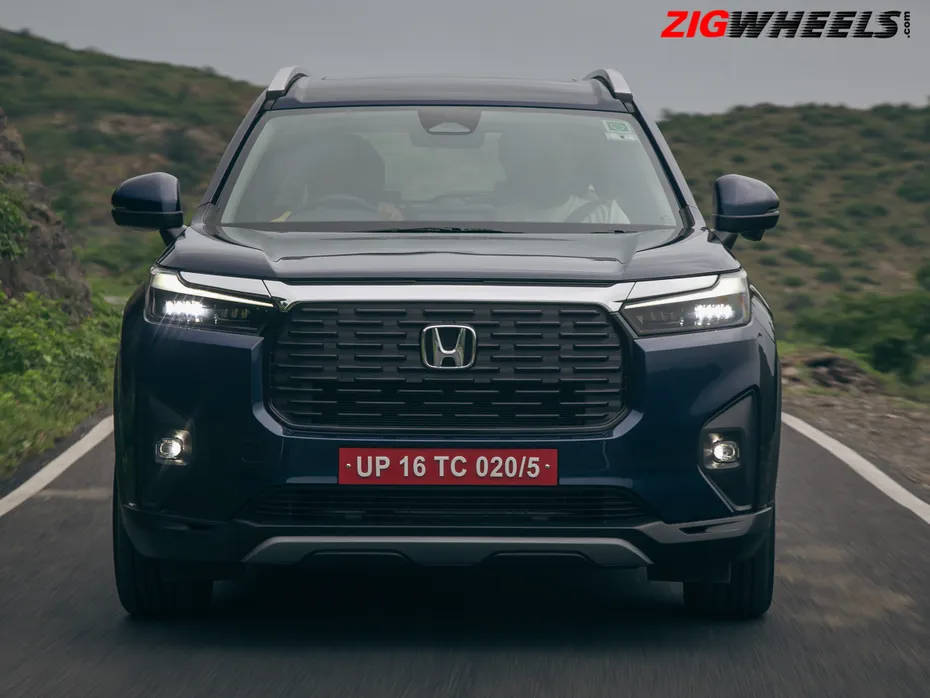
The electric Elevate is expected to get the same silhouette as the standard car, but it could get some EV-specific design cues, including a different set of alloy wheels.
It is expected to get all the features available on the standard Elevate, including a 10.25-inch touchscreen infotainment system, a 7-inch semi-digital instrument cluster, a wireless phone charger, automatic climate control and connected car technology. We also expect it to get additional safety features like a 360-degree camera, and ventilated seats. As for safety, it will get up to six airbags, ABS with EBD, electronic stability control, and ADAS features.
While there is no information yet about the technical specifications, the Elevate EV could get an expected range of around 450 km.
The Tata Altroz was recently launched in a racer version, and will also be getting an electric version. Tata had showcased the Altroz EV at the 2020 Auto Expo and it is finally is expected to be launched ahead of the Curvv EV, which is scheduled for the end of 2024. The Altroz EV was also spotted testing back in 2022.
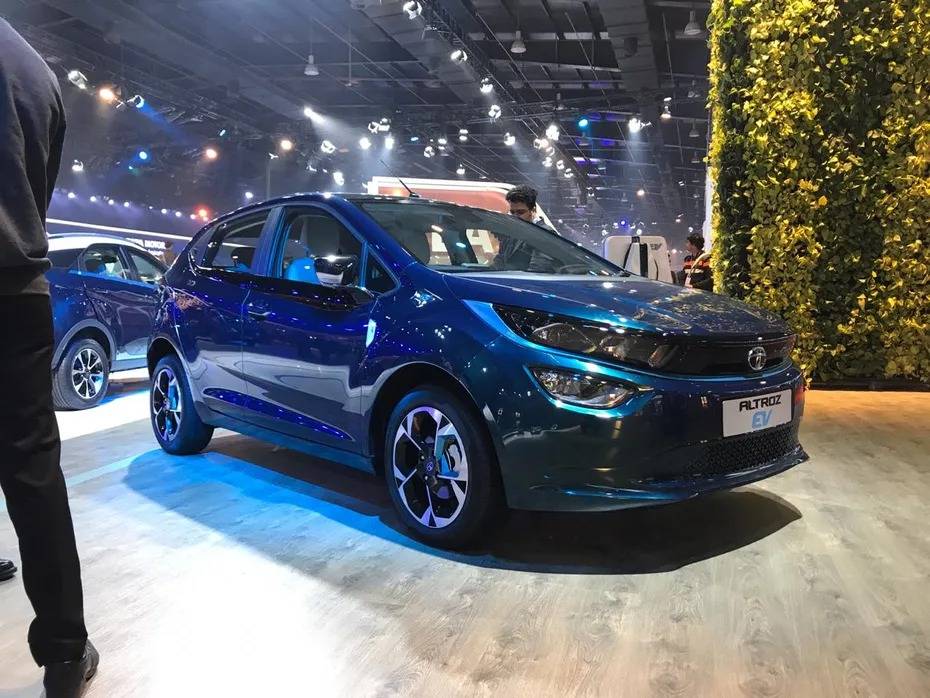
The features expected on the Altroz EV are: a 10.25-inch touchscreen infotainment system with wireless Android Auto and Apple CarPlay, a 7-inch digital driver’s display, sunroof, ventilated front seats, 8-speaker Harman Kardon premium sound system, wireless phone charger and ambient lighting. In terms of safety, it will likely get 6 airbags as standard, ABS, EBD, electronic stability control, rear parking sensors, ISOFIX child seat mounts and a 360-degree camera.
The Altroz EV is expected to be available with the Nexon EV’s medium range powertrain, which features a 129 PS electric motor paired with a 30.2 kWh battery pack. The Nexon EV has an ARAI-claimed range of 325km (on a single charge).
The Kia Seltos will also be electrified soon, and we expect it to be launched by sometime in 2025. The Seltos EV will get a similar treatment like the Creta EV.
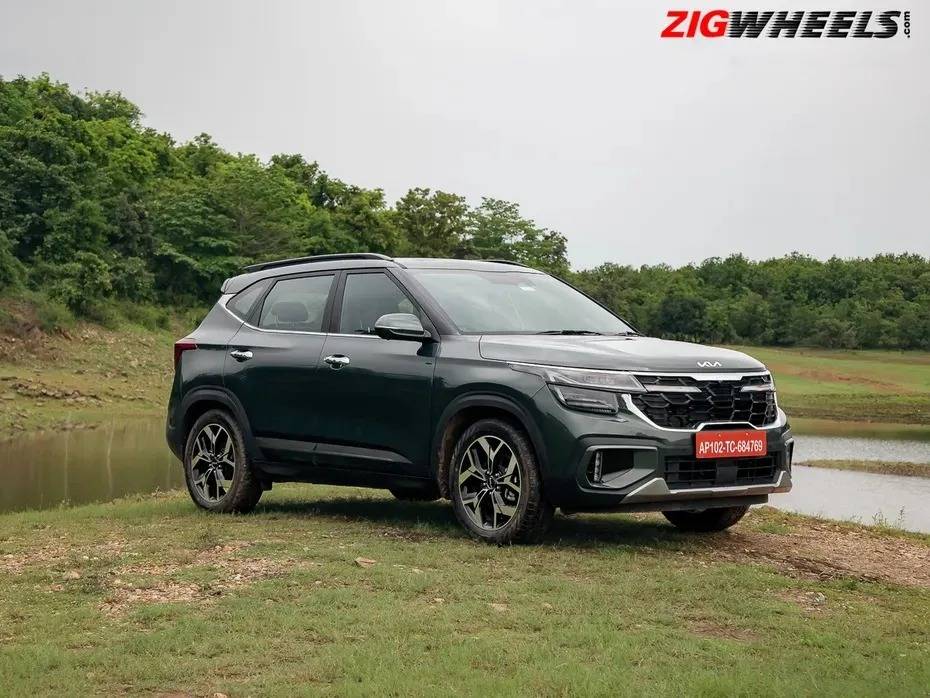
So the Seltos EV will likely have EV-specific design cues that will set it apart from the standard Seltos, and likely help it be more aerodynamically efficient. Other changes could include a tweaked bumper and grille, but the interior will be similar to the standard version of the Seltos. However, we can expect minor changes here and there.
The expected list of features include dual-integrated 10.25-inch screen, wireless Android Auto and Apple CarPlay, a dual-zone climate control, a panoramic sunroof, a Bose sound system, ventilated front seats, a powered driver’s seat and keyless entry with push button start.
Safety features will likely include ABS with EBD, front and rear parking sensors, a 360-degree camera, electronic stability control and level-2 ADAS features.
Technical specifications are yet to be revealed. However, we expect it to pack multiple battery pack options and a range of up to 400 km can be expected from the SUV. It will be on par with what the Creta EV will offer.
A special mention here goes to the Tata Sierra EV, which is expected to be launched in 2025. In its electric guise, Tata will bring back the iconic “Sierra” nameplate. It was showcased at the 2023 Auto Expo and its design has already been locked-in for production.It will be based on Tata’s Sigman platform and will get multiple seating layouts with four-seater lounge and five-seater bench versions.
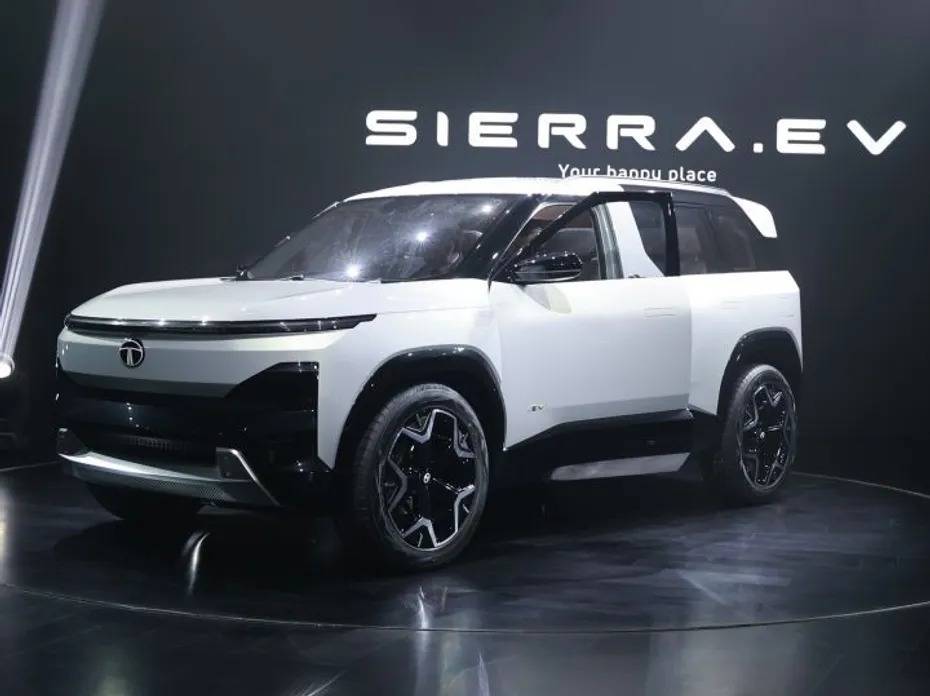
With so many mainstream nameplates going electric very soon, customers will be spoilt with options. Would you go electric or stick to sweet old combustion if given the choice? Let us know your thoughts about these upcoming electric cars.

Here’s A Better Look At The Rear End Of The Next-Gen Scorpio Ahead...

In 10 Real-life Images! Here’s How The Hyundai Creta...

Deliveries Commence! You Can Have The Mahindra Thar Roxx Anytime In...

Bolero vs Bolero Neo: Which Mahindra Offers Better Performance And...

Mahindra Will Let XUV700 Customers Know When To Expect Delivery From...

Here’s Everything That We Saw At Maruti Suzuki’s Pavilion...

A Busy Week For Auto Industry: Top 5 Key Highlights Including Auto...

Auto Expo 2025: Maruti Suzuki e Vitara Unveiled! Explained In 10...

Maruti Suzuki Takes Wraps Off Their First-ever EV e Vitara At The...
 Mahindra BE 6
Mahindra BE 6
 Hyundai Creta Electric
Hyundai Creta Electric
 Mahindra XEV 9e
Mahindra XEV 9e
 MG Windsor EV
MG Windsor EV
 Tata Curvv EV
Tata Curvv EV
India's largest automotive community
 Honda Amaze
Rs. 7.99 Lakh
Honda Amaze
Rs. 7.99 Lakh
 Honda City
Rs. 11.82 Lakh
Honda City
Rs. 11.82 Lakh
 Honda Elevate
Rs. 11.69 Lakh
Honda Elevate
Rs. 11.69 Lakh
 Honda City Hybrid
Rs. 19.00 Lakh
Honda City Hybrid
Rs. 19.00 Lakh
 Honda Amaze 2nd Gen
Rs. 7.19 Lakh
Honda Amaze 2nd Gen
Rs. 7.19 Lakh
 Mahindra BE 6
Rs. 18.90 Lakh
Mahindra BE 6
Rs. 18.90 Lakh
 Hyundai Creta Electric
Rs. 17.99 Lakh
Hyundai Creta Electric
Rs. 17.99 Lakh
 Mahindra XEV 9e
Rs. 21.90 Lakh
Mahindra XEV 9e
Rs. 21.90 Lakh
 MG Windsor EV
Rs. 13.99 Lakh
MG Windsor EV
Rs. 13.99 Lakh
 Vayve Mobility Eva
Rs. 3.25 Lakh
Vayve Mobility Eva
Rs. 3.25 Lakh